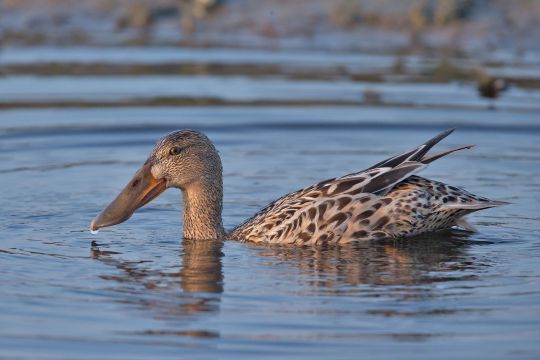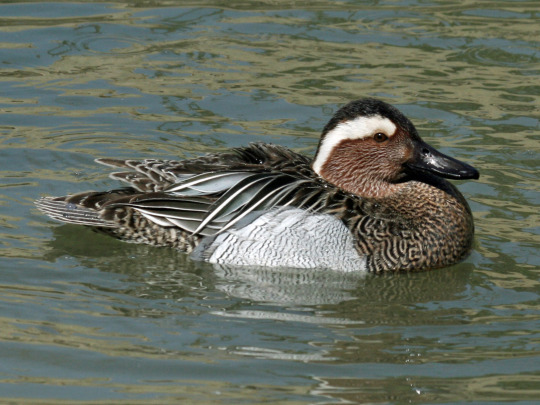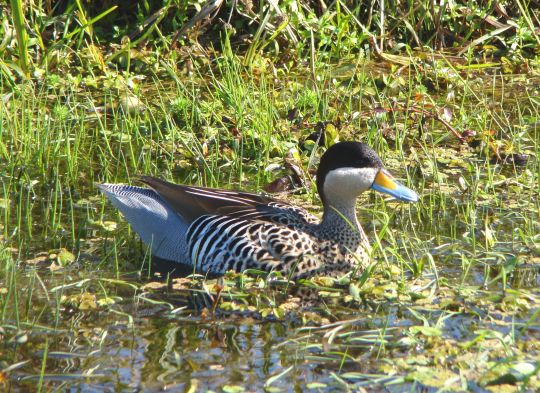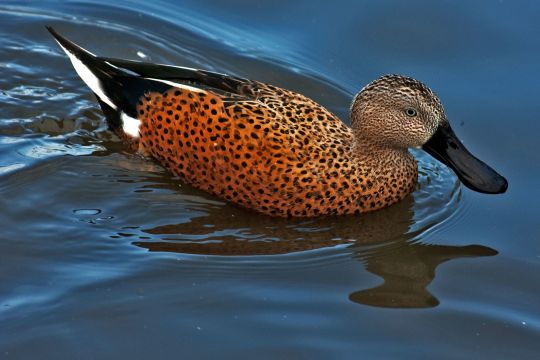#spatula quequedula
Explore tagged Tumblr posts
Text
Spatula

Northern Shoveler by Andreas Trepte, CC BY-SA 2.5
PLEASE SUPPORT US ON PATREON. EACH and EVERY DONATION helps to keep this blog running! Any amount, even ONE DOLLAR is APPRECIATED! IF YOU ENJOY THIS CONTENT, please CONSIDER DONATING!
Name: Spatula
Status: Extant
First Described: 1822
Described By: Boie
Classification: Dinosauria, Saurischia, Eusaurischia, Theropoda, Neotheropoda, Averostra, Tetanurae, Orionides, Avetheropoda, Coelurosauria, Tyrannoraptora, Maniraptoriformes, Maniraptora, Pennaraptora, Paraves, Eumaniraptora, Averaptora, Avialae, Euavialae, Avebrevicauda, Pygostylia, Ornithothoraces, Euornithes, Ornithuromorpha, Ornithurae, Neornithes, Neognathae, Galloanserae, Anseriformes, Anseres, Anatoidea, Anatidae, Anatinae
Referred Species: S. queerquedula (Garganey, Extant), S. hottentota (Hottentot Teal, Extant), S. puna (Puna Teal, Extant), S. versicolor (Silver Teal, Extant), S. platalea (Red Shoveler, Extant), S. cyanoptera (Cinnamon Teal, Extant), S. discors (Blue-Winged Teal, Extant), S. smithii (Cape Shoveler, Extant), S. rhynchotis (Australasian Shoveler, Extant), S. clypeata (Northern Shoveler, Extant)

Blue Winged Teal by MONGO, in the Public Domain
Spatula, by far one of the silliest genus names for any dinosaur, is a group of dabbling ducks with extremely long and flattened bills, hence the name. These birds live around the world and come in a wide variety of colors. Very similar to typical dabbling ducks, they were originally pushed into Anas, the genus of ducks including typical ones such as the Mallard. However, genetic evidence has since indicated the necessity of splitting it out.

Garganey by Dick Daniels, CC BY-SA 3.0
The Garganey Duck, S. quequedula, is a small, nonthreatened species in the genus, found during the breeding season in Europe and West Asia, before migrating to southern Africa, India, and Australasia during the winter in large flocks. Though not sporting a particularly spatula-like beak, it is genetically most similar to the members of Spatula, and so it is placed here. The males have brown heads and a broad white crest over the eye, giving them a very distinctive look. The females have strong face markings as well, though they are very visually similar to females from the Common Teal. They feed by skimming, and breed in quiet marshes in Northern Europe.

Northern Shoveler, by Andreas Trepte, CC BY-SA 2.5
The Northern Shoveler is by far one of the most distinctive looking ducks, also thankfully not threatened with extinction. They breed in northern Europe and Asia and North America, and then spend the winter in southern Europe, Africa, India, Southeast Asia, and Central - South America. They breed primarily along large bodies of water, such as the Great Lakes. They live primarily in open wetlands, especially marshes and wet grasslands. They are very migratory, and are found much further south during the winter, with their seasonal ranges not overlapping. More than five million birds can even be seen in a flock at a time.

Northern Shoveler by Ajit Hota, CC BY-SA 4.0
The Northern Shoveler is especially distinctive due to its very long spatulate bill, which they use by swinging from side to side to strain food in the water while dabbling. They forage for aquatic invertebrates by using comb-like projections, called lamellae, on the edges of the bill that aid in skimming off crustaceans from the water’s surface. This gives them a huge advantage over other species of duck in gathering food, and they specialize in muddy marshes with a lot of invertebrates to get the most food. They nest in grasses away from open water in shallow holes, with the males defending the females very extensively during the incubation period. They are fairly quiet ducks, weighing only about 600 grams.

Hottentot Teal by Guérin Nicolas, CC BY-SA 3.0
The Hottentot Teal, also not threatened with extinction, is a dabbling duck in this genus from Africa - specifically Sudan, Ethiopia, Niger, Nigeria, South Africa, and Namibia. They breed year round, depending on the rainfall, living in small groups or in pairs. They build their nests in tree stumps with vegetation, and they have limited parenting after hatching, mainly just providing protection. They live primarily in shallow bodies of water, feeding on both plants and animals.

Puna Teal by John Picken, CC BY 2.0
The Puna Teal is another very distinctive species in this genus, with a beautiful blue beak in both sexes. They’re found in the Andes Mountains of Peru, Bolivia, Chile, and Argentina, primarily in lakes and pools. They live in small groups, laying their eggs in long grass sometimes far away from water. They may even be monogamous for life, or at least for many breeding seasons. They are about the same size as the Wood Duck, and are brown and black speckled on the rest of their bodies.

Silver Teal by Cláudio Dias Timm, CC BY-SA 2.0
The Silver Teal also has a bright blue bill, with yellow patches on the top. They are not threatened with extinction, and currently found in Bolivia, Brazil, Paraguay, Argentina, Chile, Uruguay, South Georgia, the South Sandwich Islands, and the Falkland Islands. They then migrate to Brazil during the colder months, those that live in more southern and chilly lands. They are very protective of their young, with both parents rearing the ducklings, and potentially pair-bonding for a long time. They feed on vegetables in freshwater in small groups.

Red Shoveler by Mark Robinson, CC BY 2.0
The Red Shoveler, also not very threatened with extinction, sports a very spatula-like bill, though not quite as distinctive as that of the Northern Shoveler. The most distinctive thing about this duck is its bright red plumage, spotted black. They can weigh up to 600 or so grams. They breed in Tierra del Fuego to Chile and most of Argentina, as well as the Falkland Islands. They live primarily in shallow lakes and pools with dense reeds and marshes. They then margrate more northward during the winter. They can sometimes be found in brackish water and estuaries as well.

Cinnamon Teal by Andeansolitaire, CC BY-SA 4.0
The Cinnamon Teal is found in Western North and South America, breeding in the western United States, wintering in Mexico, and found year-round along the western coast of South America and in southern Argentina. The males are distinctively reddish brown, hence the name; while the females are brown and mottled like most other female ducks. The males also have bright red eyes, while the females have black eyes. They are not threatened with extinction, and feed by dabbling on plants, molluscs, and aquatic insects.

Blue-Winged Teal by Alan D. Wilson, CC BY-SA 2.5
The Blue-Winged Teal is found primarily in North America, and isn’t considered threatened with extinction. They breed across northern North America, migrate through the central United States, and winter in Mexico and northern South America. These ducks are mottled brown, with blue patches on their wings and blue-grey bills. They migrate in large flocks between their breeding and wintering ranges, sometimes flying over open ocean. They live mostly along the shoreline, preferring calm bodies of water such as inland marshes, lakes, ponds, pools, and shallow streams. They build their nests in dry grassy sites like meadows and hayfields, though fairly close to open water. They feed on a variety of vegetation in mudflats and shallow water, though they also can be found feeding on mollusks and other invertebrates. They are the first ducks south in the fall and the last ones north in the spring, giving them a limited breeding time; they are usually the last dabbling ducks to nest. The ducklings are usually able to walk to water with their mother within twelve hours of hatching. These birds are fed upon by snakes, snapping turtles, and a variety of mammals and other birds.

Cape Shoveler by Dick Daniels, CC BY-SA 3.0
The Cape Shoveler is known primarily from South Africa, though is sometimes found as far north as Namibia, Botswana, Zimbabwe, Angola, Lesotho, Mozambique, and Zambia. They are non-migratory and form very large flocks. Their large spatula bills are once again used for filtering food by swinging from side to side, though they primarily eat vegetation and only eat molluscs and insects during the nesting season. They are fairly quiet birds, with similar-looking sexes, and aren’t threatened with extinction.

Australasian Shoveler by Dick Daniels, CC BY-SA 3.0
The Australasian Shoveler is our last species in this genus, also not threatened with extinction. They live in Australia, Tasmania, and New Zealand. The males have reddish feathers like the Red Shoveler, and grey and white patterned heads; while the females are more brown and mottled throughout. They have extensive courtship vocalizations, and unfortunatelymales will often pursue females already paired up for the season. Courtship fights are, thus, very common. Sometimes the females will even defecate on males who they find unworthy in the middle of flight. Mating usually happens around October, though it can occur as early as August.
Buy the author a coffee: http://ko-fi.com/kulindadromeus
Sources:
https://en.wikipedia.org/wiki/Spatula_(genus)
https://en.wikipedia.org/wiki/Garganey
https://en.wikipedia.org/wiki/Northern_shoveler
https://en.wikipedia.org/wiki/Hottentot_teal
https://en.wikipedia.org/wiki/Puna_teal
https://en.wikipedia.org/wiki/Silver_teal
https://en.wikipedia.org/wiki/Red_shoveler
https://en.wikipedia.org/wiki/Cinnamon_teal
https://en.wikipedia.org/wiki/Blue-winged_teal
https://en.wikipedia.org/wiki/Cape_shoveler
https://en.wikipedia.org/wiki/Australasian_shoveler
https://en.wikipedia.org/wiki/Northern_shoveler
#spatula#duck#shoveler#bird#dinosaur#teal#garganey#hottentot teal#puna teal#silver teal#red shoveler#cinnamon teal#blue-winged teal#cape shoveler#australasian shoveler#northern shoveler#spatula quequedula#spatula hottentota#spatula puna#spatula versicolor#spatula platalea#spatula cyanoptera#spatula discors#spatula smithii#spatula rhynchotis#spatula clypeata#dinosaurs#biology#a dinosaur a day#a-dinosaur-a-day
79 notes
·
View notes